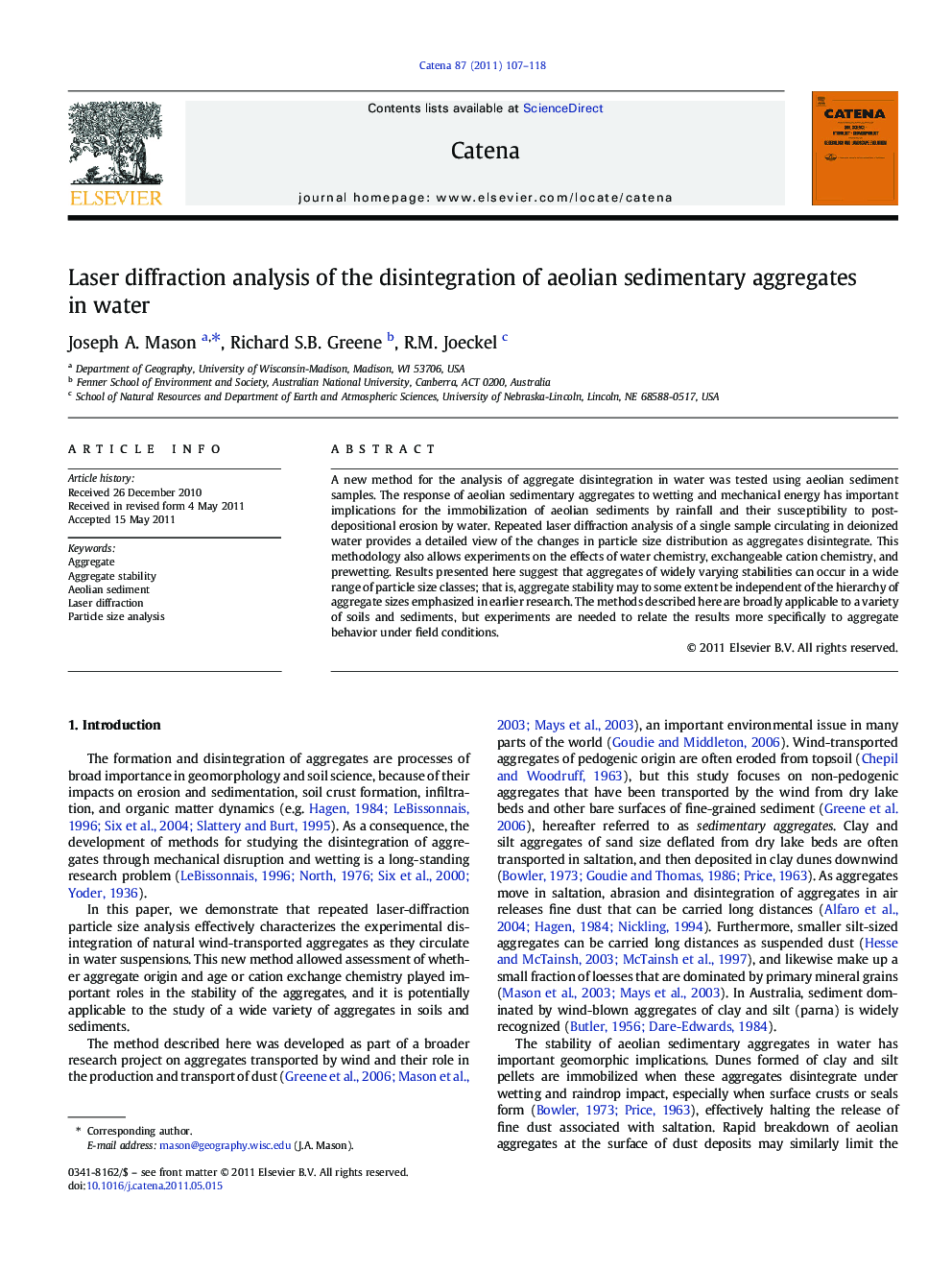| Article ID | Journal | Published Year | Pages | File Type |
|---|---|---|---|---|
| 4571983 | CATENA | 2011 | 12 Pages |
A new method for the analysis of aggregate disintegration in water was tested using aeolian sediment samples. The response of aeolian sedimentary aggregates to wetting and mechanical energy has important implications for the immobilization of aeolian sediments by rainfall and their susceptibility to post-depositional erosion by water. Repeated laser diffraction analysis of a single sample circulating in deionized water provides a detailed view of the changes in particle size distribution as aggregates disintegrate. This methodology also allows experiments on the effects of water chemistry, exchangeable cation chemistry, and prewetting. Results presented here suggest that aggregates of widely varying stabilities can occur in a wide range of particle size classes; that is, aggregate stability may to some extent be independent of the hierarchy of aggregate sizes emphasized in earlier research. The methods described here are broadly applicable to a variety of soils and sediments, but experiments are needed to relate the results more specifically to aggregate behavior under field conditions.
Research highlights► The stability in water of aggregates deposited with aeolian sediments can influence subsequent erosion and deposition. ► Repeated laser diffraction particle size analysis can be used to characterize of aggregate disintegration over time. ► The new method reveals that aggregate stability at least partly independent of the hierarchy of aggregate sizes. ► The method is applicable to a wide range of soils and sediments.
